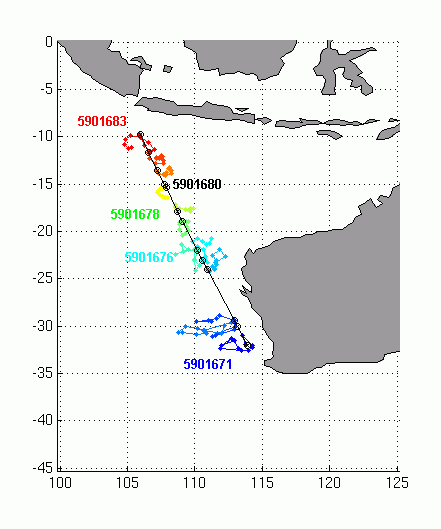Ultimately operated by the the US-Canadian IUSS Pacific-Indian Ocean, Naval Ocean Processing Facility, Whidbey Island, Washington State, is the following. Above is the track of an IUSS undersea array from Japan, through Southeast Asia, to India. Many customer countries, such as Australia, would use the array's data to keep an eye on interesting submarines, like China's.
Note the Indian Ocean point of the "hook" terminated at India's Andaman & Nicobar Islands but now extends to Chennai, Indian mainland. Source the late Desmond Ball's and Richard Tanter's, The Tools of Owatatsumi Japan’s Ocean Surveillance and Coastal Defence Capabilities (2015, ANU Press) page 54, Map 4.
For submarine operations and for IUSS acoustic sensors a great many temperature, salinity, wave motion, seafloor geography and baseline acoustic measures are required to feed supercomputer records of US Naval Intelligence in conjunction with the NSA. Such an amount of data permits 3D modelling.
America's Five Eye partners all do their bit to collect data using sensors on submarines, ships, wave-gliders, AUVs and floats. Floats and AUVs might be assigned certain depths from the surface down to 2,000 meters. After several months the floats or AUVs come to the surface to radio the vast amount of data they have collected or rendevous to be "captured" by friendly ships.
The environmental including acoustic records held on board submarines are tailored to their missions and are constantly updatable. They assist submarines to move discretely and improve the efficiency of IUSS undersea sensors, frequently assisting ASW operations.
The Royal Australian Navy (RAN) constantly conducts measurements often in the context of Australia dual civilian-naval Integrated Marine Observing System (IMOS).
IMOS uses passive acoustic hydrophone equipment to monitors natural and "man-made noise sources". Such sources include submarines, surface ships and even maritime patrol aircraft and helicopters flying over hydrophones.
Hydrophone arrays are strung together physically-electrically (or within acoustic communications range) and are connected to shore stations. For Australia data is then fed constantly by landline, radio or satellite to major naval bases like Fleet Base West (near Perth) and East (in Sydney). All feeds would also go to Defence HQ Canberra.
Feeds may be transmitted almost instantly to subs, ships and aircraft pursuing targets or land processed to improve the "picture". Feeds may also go to Five Eye allies and Quads (India and Japan).
Returning to Integrated Marine Observing System (IMOS) in more detail:
The RAN and Australian Defence Science and Technology (DST) Group would not be the largest "Operational Partners" of IMOS unless there were concrete military advantages.
As Australia's submarines operate out of Fleet Base West, just sould of Perth, eastern Indian Ocean littoral and deeper oceanic conditions are of major interest.
The map above relates to IMOS Indian Ocean Deployments including an IMOS technician who dropped Argo Floats along the track above.
---
---
One could assume from the float track immediately above that an IUSS array from Fleet Base West to Australia's Cocos-Keeling or Christmas islands may be a good idea.
Moving west an array from one of those islands to the US/UK base at Diego Garcia might be a useful Five Eye project. India might also be a customer for that feed data.
From Diego Garcia an array might be well placed to terminate at the US Naval Base at Djibouti. See map below.
Separately an array from Fleet Base West to the seabed north of Antarctica might be a useful way to intercept Chinese SSNs which may travel the more discrete east to west route south of Australia through the Southern Ocean.
All guesswork.



